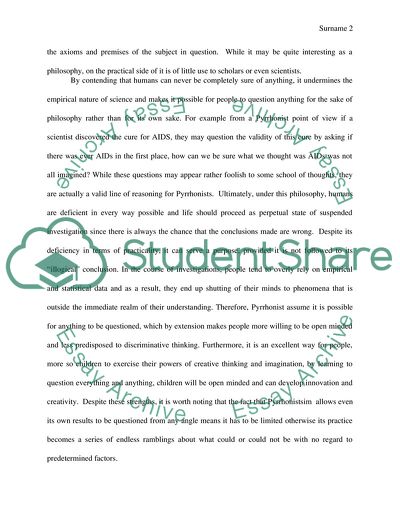Cite this document
(The Strengths and Weaknesses of the Pyrrhonist, Theravadin Essay Example | Topics and Well Written Essays - 1750 words, n.d.)
The Strengths and Weaknesses of the Pyrrhonist, Theravadin Essay Example | Topics and Well Written Essays - 1750 words. https://studentshare.org/philosophy/1835158-what-are-the-strengths-and-weaknesses-of-the-pyrrhonist-theravadin-and-classical-chinese-approaches-to-the-good-or-ethical-life-is-one-of-these-approaches-superior-to-the-others-which-one-and-why-or-is-none-of-them-superior-why
The Strengths and Weaknesses of the Pyrrhonist, Theravadin Essay Example | Topics and Well Written Essays - 1750 words. https://studentshare.org/philosophy/1835158-what-are-the-strengths-and-weaknesses-of-the-pyrrhonist-theravadin-and-classical-chinese-approaches-to-the-good-or-ethical-life-is-one-of-these-approaches-superior-to-the-others-which-one-and-why-or-is-none-of-them-superior-why
(The Strengths and Weaknesses of the Pyrrhonist, Theravadin Essay Example | Topics and Well Written Essays - 1750 Words)
The Strengths and Weaknesses of the Pyrrhonist, Theravadin Essay Example | Topics and Well Written Essays - 1750 Words. https://studentshare.org/philosophy/1835158-what-are-the-strengths-and-weaknesses-of-the-pyrrhonist-theravadin-and-classical-chinese-approaches-to-the-good-or-ethical-life-is-one-of-these-approaches-superior-to-the-others-which-one-and-why-or-is-none-of-them-superior-why.
The Strengths and Weaknesses of the Pyrrhonist, Theravadin Essay Example | Topics and Well Written Essays - 1750 Words. https://studentshare.org/philosophy/1835158-what-are-the-strengths-and-weaknesses-of-the-pyrrhonist-theravadin-and-classical-chinese-approaches-to-the-good-or-ethical-life-is-one-of-these-approaches-superior-to-the-others-which-one-and-why-or-is-none-of-them-superior-why.
“The Strengths and Weaknesses of the Pyrrhonist, Theravadin Essay Example | Topics and Well Written Essays - 1750 Words”. https://studentshare.org/philosophy/1835158-what-are-the-strengths-and-weaknesses-of-the-pyrrhonist-theravadin-and-classical-chinese-approaches-to-the-good-or-ethical-life-is-one-of-these-approaches-superior-to-the-others-which-one-and-why-or-is-none-of-them-superior-why.


